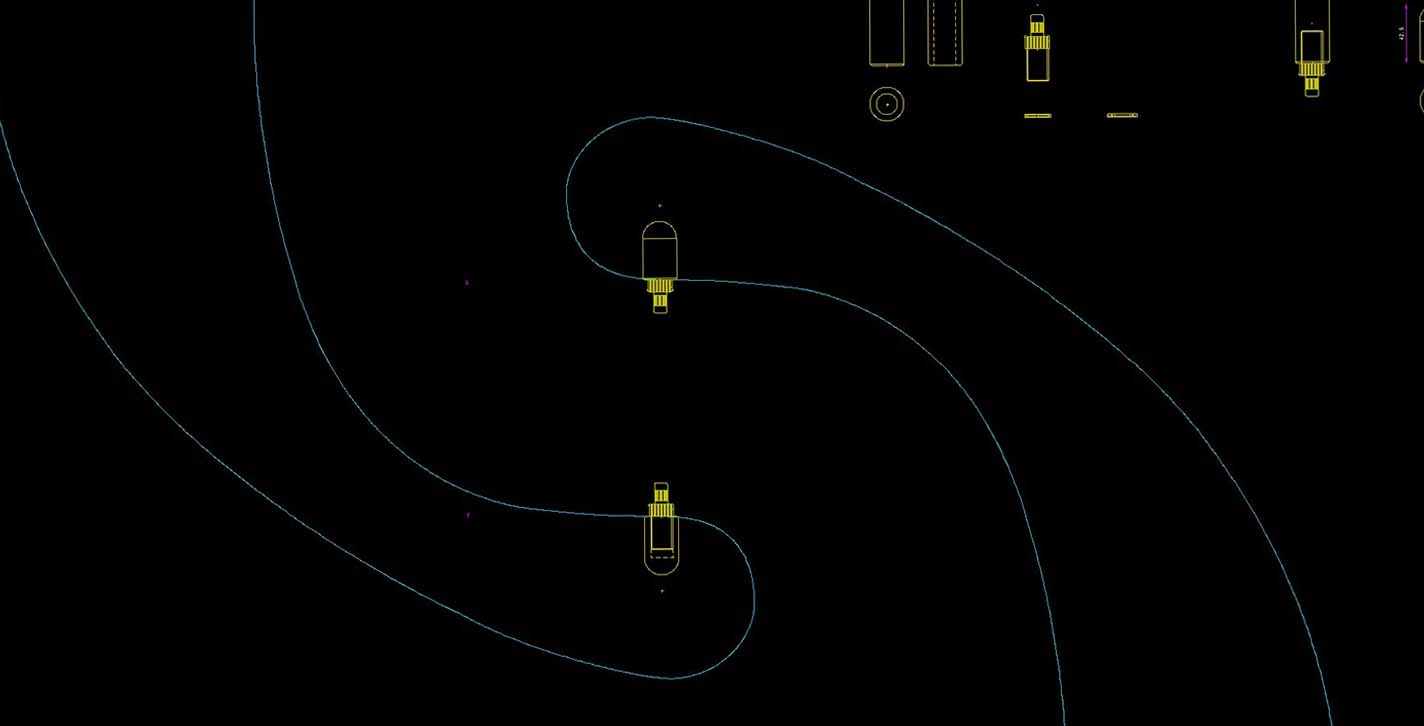S H U K U
2023, Exhibition
大小島真木 + Maquis
六本木アートナイト2023
Exhibition 千鹿頭 | 調布市文化会館 たづくり
Installation view
Text: S H U K U
日本には由緒の定かではない奇妙な神が多くいる。
古来、シュクと呼ばれてきた神も、そうした奇妙な神々──異神──の系譜に連なる神だ。
シュク──と、書いてはいるが、実はシュクはその呼び名さえ定かであったためしがない。シュクは時に、スク、サク、サゴ、シャク、シャグジ、シャモジなどとも呼ばれていたし、あるいは、宿、夙、祝、守久、作、石、左口などとも書き記されていた。
シュクはまた融通無碍にその形相と様相を変えてきたということも知られている。
ある時はシュクは石に宿り、村落の境界を守護する塞の神として崇められていた。ある時はシュクは外来の異形の像に宿り、寺院の後戸において猿楽の徒たちの祖神として祀られていた。またある時はシュクは酒や穀物の神、龍蛇や猪鹿の神、胞衣や胎児を表す荒神とみなされ、聖別された童子たちの身体を依りましにその生成の力を露わにすると信じられていた。
シュクはとりとめがなく、変幻自在であり、またクィアである。シュクは時代や場所に応じて、その名、姿、霊験を変えながら、諸物のあいだを往来しつづけてきた。男神なのか女神なのか、はたまた動物神なのか植物神なのかも定かではない。あたかもシュクとは、その正体の明らかならざること、いまだ何者でもないということこそを本性とする神であるかのようだ。
今回、私たちは東京の中心、無数の人々が行き交う六本木ヒルズのショッピングストリートの三叉に、現代のシュクのための憑座を設置しようと思う。今日の都市にもし新たに御神体を立ち上げるのだとすれば、シュクの胡乱な佇まいこそが相応しいだろうと考えたからだ。あるいはシュクのとりとめのなさ、何者でもなさに、特定の何者かであることを絶えず要請され、また特定の何者かであろうと絶えず汲々としている私たちの、反転した鏡像を認めることもできるだろう。シュクは「宿」り、「作」り、「守」り、また「祝」う神である。フランスの思想家ジョルジュ・バタイユがいみじくも述べているように、非連続性を生きる個体は「祝」祭の蕩尽がもたらす目眩のなかで失われた連続性──何者でもなさ──へと回帰する。日本においてこの六本木という街が日常化した蕩尽がもっとも熱く繰り広げられている街の一つであるということは言うまでもない※。
憑座の制作には様々な素材を用いた。極彩色のLEDライトによって明滅する十二面体のオブジェは楠を素材としており、かつての磐座に見立てたものである。その十二面体を支えているのは、諸点のあいだを往来する張力を利用したテンセグリティ構造の鉄の台座であり、そこには唯一の重心というものが存在していない。十二面体の各面に張られたハーフミラーによって無限にこだまする光の羊水をたゆたうのは、種へと分化する以前の胎芽を模ったガラスのオブジェである。光の管のようなプラスチックの臍帯が、その胎芽を十二面体の外部にあるもう一つの十二面体に潜む電力源へと繋いでいる。また、全体を包囲するように建てられた四本の木柱を覆っている植物は、生成力を象徴する常緑性シダ植物のヒカゲノカズラである。
異形の鉄の台座は見るものの空間認識を揺るがせる。光の無限鏡は覗き込むものに不安と恍惚を同時にもたらす。その混沌の奥にシュクのほのかなきざしを垣間見るとき、定かであると信じてきた〈私〉の輪郭線もまたにわかに綻び、諸物のあいだをとりとめもなく漂い始める。
※ところで、マーケット、つまり“市”とは、いにしえにおいて、物品交換の場であるとともに、この世とあの世との境界、霊魂移動の場でもあったという。それは、日本語の「市」という言葉が、市場だけではなく巫女(いつきめ)をも意味するということに端的に示されている。物の所有権の移動には、物に憑りついた神の移動が伴う。市とは、精霊や祖霊や物神が不断に飛び交い、その巷で人々が歌い、踊り、まぐわい、品々を交換する、無縁にして無主なる狂宴乱舞の場でもあったのだ。シュクのおとずれを待つ上で、市ほどふさわしい場というのも他にないかもしれない。
About SHUKU
There are many peculiar gods in Japan whose origins remain uncertain.
The deity known as Shuku since ancient times, comes from a lineage of such strange gods.
Although usually called "Shuku," in fact, Shuku has never been known by that exact name alone. Shuku has also been called Suku, Saku, Sago, Shaku, Shaguji or Shamoji.
Shuku is also known to have changed its shape and appearance flexibly.
At one time, Shuku inhabited a stone and was worshiped as a god of fortification, guarding the boundaries of villages.
At other times, Shuku resided in a strange statue from abroad and was worshiped as the ancestral god of the Sarugaku (ancient form of Japanese theater) performers at the back door of a temple. At other times, Shuku was regarded as the god of wine and grain, the god of dragons, snakes, boars, and deer, the god of spores and fetuses, and was believed to reveal his generative powers through the bodies of consecrated children.
Shuku is restless, ever-changing, and queer. Shuku has continued to come and go between all things, changing its name, form, and spiritual nature according to the times and places. It is not clear whether it is a male or female deity, or even whether it is an animal or plant god. It is as if Shuku is a god whose true nature is that his true identity is not yet known, that he is still a nobody.
This time, we are planning to install a dwelling place for the contemporary Shuku at the crossroads of the shopping street in Roppongi Hills, where countless people come and go in the heart of Tokyo. If a new divine object were to be established in today's city, we thought the
the unpredictable nature of Shuku would be fitting. We might also recognize our own inverted mirror image in Shuku's unpredictability and non-being, as we are constantly demanded to be something specific, and are incessantly striving to be something.
Shuku, as suggested by its various written forms, is a deity that 'dwells', 'creates', 'protects', and also 'celebrates'. As French philosopher Georges Bataille aptly suggests, an individual living in discontinuity returns to the lost continuity—the state of non-being—in the dizziness brought
about by the exhaustion of the festival. Roppongi is one of the cities in Japan where such normalized exhaustion is fervently unfolding.*
Various materials were used in the creation of the dwelling. The object, a blinking dodecahedron illuminated by vibrant LED lights, is made of camphor wood and represents the ancient stone seat. Supporting this dodecahedron is an iron pedestal constructed using tensegrity principles, utilizing tension between multiple points, with no single center of gravity. Hovering above each face of the dodecahedron is a glass sculpture resembling a pre-differentiated embryo, creating an infinite echo of light through the use of half-mirrors. Plastic umbilical cords, resembling light tubes, connect these embryos to another dodecahedron located outside the main structure, which harbors a hidden power source. Surrounding the entire installation are four wooden pillars, covered with the evergreen fern plant known as Hikage no Kazura, symbolizing generative power.
The oddly shaped iron pedestal shakes the viewer's perception of space. The infinite mirror of light brings both anxiety and ecstasy to those who look into it. When we catch a glimpse of Shuku's faint glimmering eyes in the depths of the chaos, the outline of "I," which we have believed to be definite, is suddenly torn apart and begins to drift aimlessly between all things.
*By the way, the word "market" in ancient times referred not only to a place of goods exchange but also to a boundary between this world and the otherworld, a place of spirit translocation. This is clearly demonstrated by the fact that the Japanese word "ichi" (market) also means "shrine maiden." The transfer of ownership of goods involves the movement of the gods attached to those goods. The market was a place where spirits, ancestral spirits, and object deities constantly intermingled, where people sang, danced, engaged in intimate acts, and exchanged various goods—a realm of wild revelry and dance without affiliation or ownership. Perhaps there is no other place more suitable than a market to await the arrival of Shuku.
Credit
今回の展示作品《SHUKU》は大小島真木、辻陽介、久山ドナルド宗成を中心とするメンバー不定のアーティストグループ〈Maquis〉による制作であり、今作品においては、竹俣圭清(木漆工)、森山隆平、Rafael Zarazua(ガラス)の他、電飾アドバイザーとして村山正弘(一灯破闇)、鉄工制作においては山恵鉄工が制作参加している。
"SHUKU" is the work of Maquis, an artist group of indeterminate membership consisting of Maki Ohkojima, Yosuke Tsuji, and Muneaki Donald Kuyama. In addition to Ryuhei Moriyama, Keikiyo Takemata (wood and lacquer work), Rafael Zarazua (glass), Masahiro Murayama | Ichi-tou-ba-yami (decorative advisor) and San-ei Ironworks is participating in the production of the ironwork.
(主要参考文献)
柳田國男『石神問答』『毛坊主考』
折口信夫『石の神とさえの神』『大嘗祭について』
中山太郎『御前左口神考』
服部幸男『宿神論』
中沢新一『精霊の王』
山本ひろ子『荒神領』
前田速夫『白の民俗学へ』
笹本正治『辻の世界 歴史民俗学的考察』
古部族研究会『日本原初考 古代諏訪とミシャグジ祭政体の研究』
『神道集』『延喜式』
Making
Video archive
Other Works
←Archives© 2025 Maki Ohkojima






















